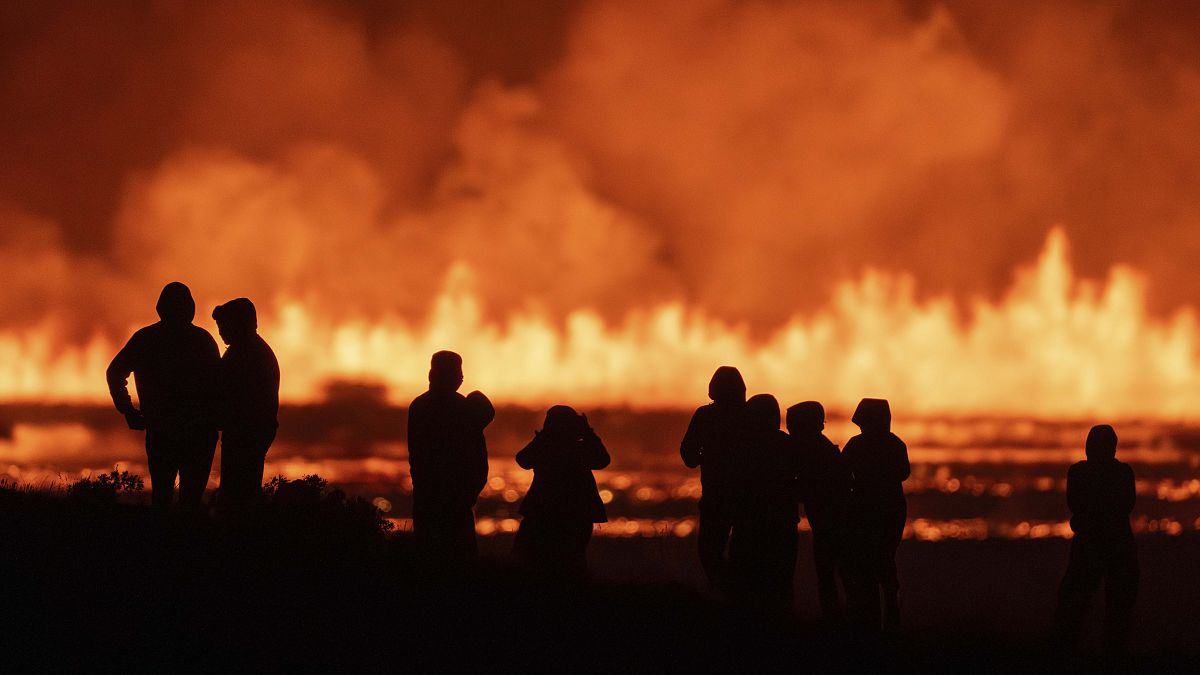An eruption of a volcano in southwestern Iceland occurred for the sixth time since December, with lava spewing through a new fissure on the Reykjanes Peninsula. The eruption followed a series of strong earthquakes and resulted in a 4-kilometre fissure cutting through the Sundhnúkur crater. Despite road closures, authorities confirm that the effects of the eruption are localised and do not pose a threat to the population.
Experts have indicated that unlike previous eruptions, the lava flow from this eruption is not heading towards the town of Grindavik, which had been largely evacuated in December. Geophysicists suggest that the eruption may have reached its peak, making it less likely to endanger nearby areas in the future. Although the situation is being monitored closely, the current eruption does not pose an immediate danger to Grindavik and its residents.
The eruption has attracted the attention of many curious onlookers, with hundreds of people driving to nearby vantage points to witness the natural spectacle. Visitors from around the world have expressed awe at the sight of the red lava flowing from the volcano. However, for those living and working on the Reykjanes Peninsula, the repeated eruptions and evacuation orders have caused frustration and disruptions to daily life.
Residents of Grindavik, a town of 3,800 people located about 50 kilometres southwest of Reykjavik, have been impacted by the recent volcanic activity. The eruptions have damaged infrastructure and property, leading to the relocation of many residents for their safety. In the most recent eruption, strong winds blew plumes of toxic gas over the town, prompting further evacuations and safety measures.
The Blue Lagoon geothermal spa, a popular tourist attraction in Iceland, was also evacuated due to the eruption. Videos on social media captured sirens blaring around dusk as residents and visitors were instructed to leave the area. Despite the disruptions caused by the volcanic activity, authorities do not expect this eruption to impact air travel, unlike the disruptive 2010 eruption of the Eyjafjallajokull volcano which disrupted trans-Atlantic air travel for months.
As Iceland sits above a volcanic hot spot in the North Atlantic, the country experiences an average of one eruption every four to five years. While volcanic activity is a natural part of Iceland’s landscape, the recent eruptions near Grindavik have raised concerns and challenges for the local population. With ongoing monitoring and assessment of the situation, authorities are working to ensure the safety and well-being of those affected by the eruption on the Reykjanes Peninsula.










